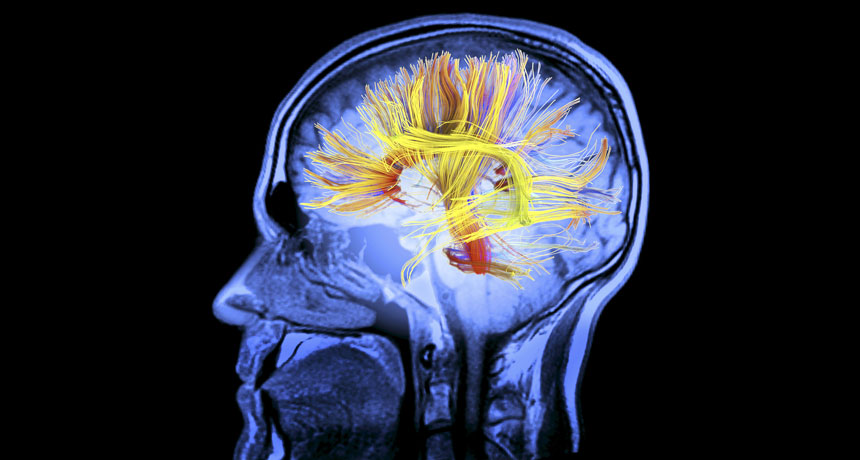When tickling the brain to stimulate memory, location matters

BOSTON — Conflicting results on whether brain stimulation helps or hinders memory may be explained by the electrodes’ precise location: whether they’re tickling white matter or gray matter.
New research on epilepsy patients suggests that stimulating a particular stretch of the brain’s white matter — tissue that transfers nerve signals around the brain — improves performance on memory tests. But stimulating the same region’s gray matter, which contains the brain’s nerve cells, seems to impair memory, Nanthia Suthana, a cognitive neuroscientist at UCLA, reported March 25 at a meeting of the Cognitive Neuroscience Society.
A groundbreaking study by Suthana and colleagues, published in 2012 the New England Journal of Medicine, found that people performed better on a memory task if their entorhinal cortex — a brain hub for memory and navigation — was given a low jolt of electricity during the task. But subsequent studies stimulating that area have had conflicting results. Follow-up work by Suthana suggests that activating the entorhinal cortex isn’t enough: Targeting a particular path of nerve fibers matters.
“It’s a critical few millimeters that can make all the difference,” said Suthana.
The research underscores the complexity of investigations of and potential treatments for memory loss, said Youssef Ezzyat, a neuroscientist at the University of Pennsylvania. Many variables seem to matter. Recent work by Ezzyat and colleagues found that the kind of brain activity during stimulation is also important, as is the precise timing of the stimulation (SN: 3/31/2018, p.16).
Suthana and her colleagues worked with 25 people with epilepsy who had electrodes already implanted in the brain for controlling seizures. Some people’s electrodes were in the entorhinal cortex’s gray matter, and some were in its white matter fibers, which extend to the hippocampus, an area known for its role in memory. Study participants received a low current of electricity while performing a memory task such as learning lists of words, names of objects (for example, “chair” or “cat”) or recognizing particular faces. Participants were then distracted with another task and then had to recall what they had learned previously.
People whose electrodes were stimulating white matter did better on the memory tasks, the researchers discovered. Stimulating gray matter seemed to have a detrimental effect, though there were too few participants to determine whether or not the impairment results were a fluke.
Deep brain stimulation has been heralded as a possible treatment for ills from obesity to obsessive-compulsive disorder to traumatic brain injury. But studies often rely on patients who have electrodes implanted for something other than memory so it can take years and collaborations among several institutions to collect enough data to see something meaningful. The size of electrode, its exact location, the amount of current delivered and other factors may matter more than researchers have recognized. But the devil may be in these details, which need to be noted as research unfolds, Suthana said.
“This is an opportunity as a field for us to adopt common guidelines and methods of reporting so we can better understand what’s happening,” she said.